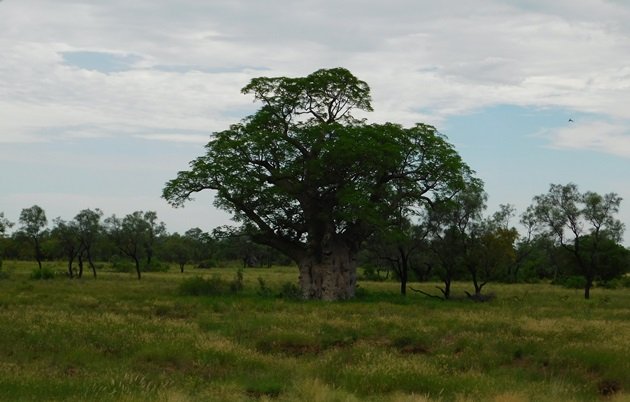
Last Sunday it was a dull, cool morning when we awoke and we decided to do a day trip to Derby. It gave us a chance to hopefully add a few new birds to our 2021 bird list and see the lush green land after recent rainfall. The header photo is of a boab tree covered in leaves. Most of the photos that you see of boab trees in the Kimberley show them in our dry months and they do not have the leaf coverage that you see at this time of year.
Derby is our closest town and about 225 kilometres away. The highway does cross several floodways and the mighty Fitzroy River, but there was no water over the road. The land is lush and green and it is advisable to stick to the bitumen due to the very soft edges! We were on the road by 7am to make the most of daylight hours. We had driven to Derby for the day in December 2014 and knew it would be green!
Our first stop was at an ephemeral lake and we were finally able to get Straw-necked Ibis onto our year list. Since the rain started the birds have left town and been elusive. We were also delighted to see a pair of Black-tailed Treecreepers and add them to our list. It really wasn’t great light for taking photographs and Black-tailed Treecreepers do not stay still for any length of time. They search the paperbark trees for grubs and go up the trunks.
Black-tailed Treecreeper
It was good to see the great expanses of water and green vegetation as we travelled north. Derby has had more rain than Broome in recent weeks. On the edge of the town of Derby we stopped to observe some Yellow-throated Miners having a squabble on the power lines. This particular bird species is not common around Broome, but easily found in Derby.
Driving out to the Derby wharf the mudflats were wet from recent rains. A small pool remained on the edge of town and a Little Egret was busy finding food. The Little Egret was showing some breeding plumage and it is the time of year for many birds to breed. As always there were White-breasted Woodswallows lined up on the power lines.
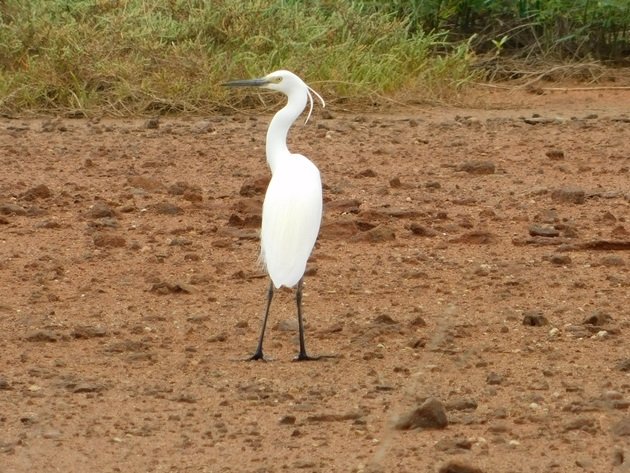
Little Egret
The tide was out and we were hopeful of a Great-billed Heron, but luck was not on our side for this species on this visit. There were Eastern Curlew feeding on the mud, though. There are never many shorebirds at Derby wharf, but it generally reliable for the endangered Eastern Curlew at this time of year.
There is a bench at the Derby wharf that offers shade under two large trees. It is a very good place to sit and wait to see what comes out of the mangroves. We were very pleased to see a Kimberley Flycatcher and a Mangrove Grey Fantail in the tree. Both of these bird species are easier to find in Derby than in Broome.
Kimberley Flycatcher
The Mangrove Grey Fantail was not posing as well as the Kimberley Flycatcher. Both birds could have easily been overlooked if you had not taken a rest on the park bench!

Mangrove Grey Fantail
We always go to the Derby airport when we visit Derby. There are very few planes that fly in and out of Derby. However, it is a popular place for Masked Lapwings to breed. We have seen them nesting there on a few occasions and it was no different this time. There was a pair of Masked Lapwings with two chicks and another pair nearby.
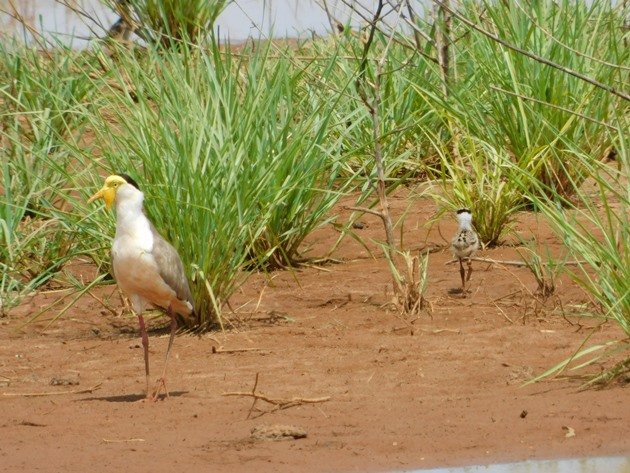
Masked Lapwing and chick
We could not stay too late into the afternoon, because we don’t drive on dusk in the Kimberley. There are too many animals that wander onto the road. Both native animals and cattle from the stations wander aimlessly onto the highway at any time of day, but it is worse between dusk and dawn.
About half way home we had to do a quick turnaround for not just any bird, but an Australian Bustard with young. Although Australian Bustards are fairly easy to observe around Broome we had not seen such a young bird before. I was not sure I would even get a chance to photograph them as we travelled back towards the two birds. You can hardly see the young bird on the left in the first photo.
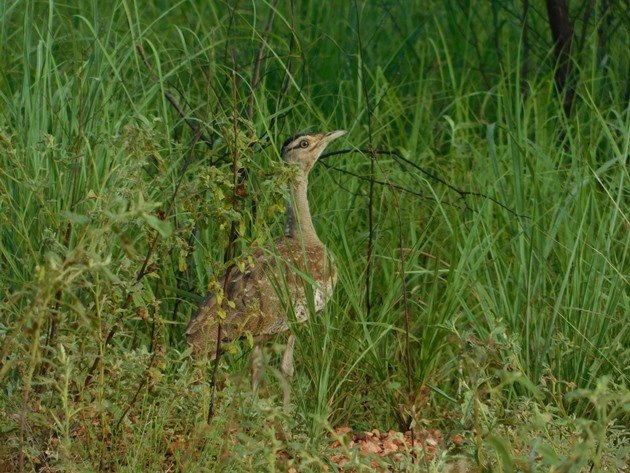
Young Australian Bustard
Adult and young Australian Bustard
Shortly afterwards we encountered a very scruffy looking Black-breasted Buzzard. It was soaring the skies in search of food. We were home by 6pm and had a very enjoyable day out.
Our 2021 year list has now reached 152 for the Broome and Derby area. We still have a few birds that we thought we would have observed by now, but have not. With the ever changing weather at the moment we are always on the lookout whether we are cycling, walking or driving. With current travel restrictions around Australia and internationally we are grateful we live in an area that is so rich with birds and other wildlife.


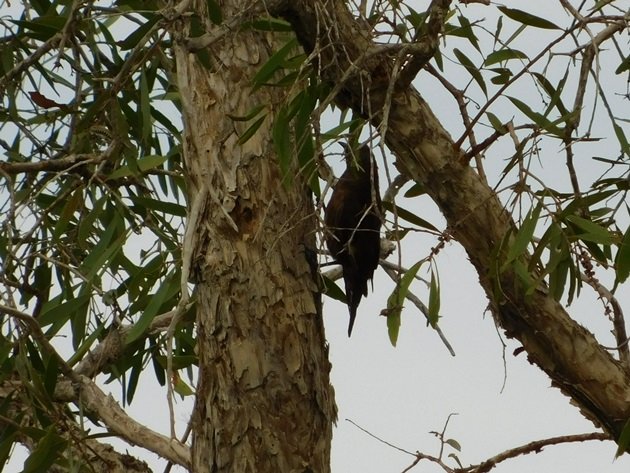
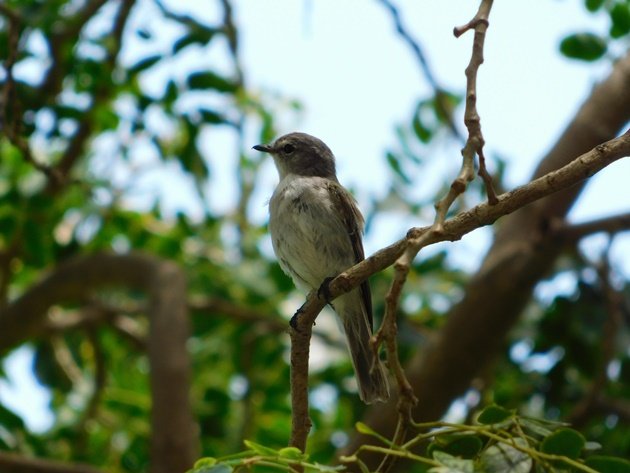
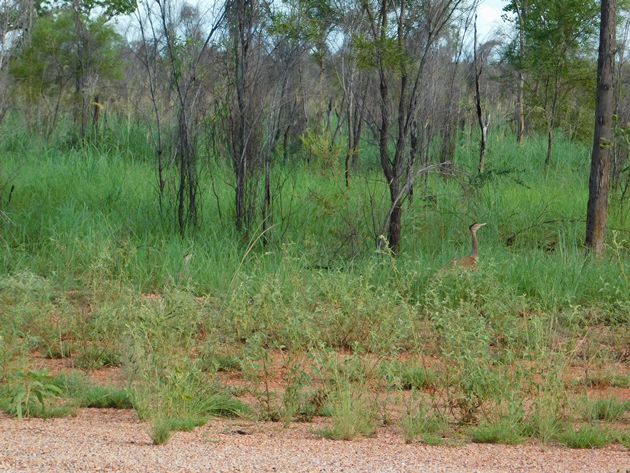
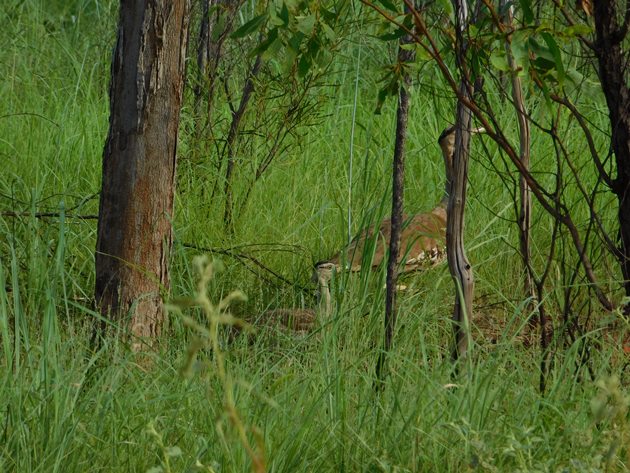










It looks fabulous! I especially like seeing the lapwing chick and the juvenile bustard.
The juvenile Bustard was very special! Nothing like a quick turnaround on the highway, but there is no traffic this time of year!
Only a Western Aussie could get away with calling the Fitzroy “mighty” 😉
Doing a bit more than trickling this time of year!